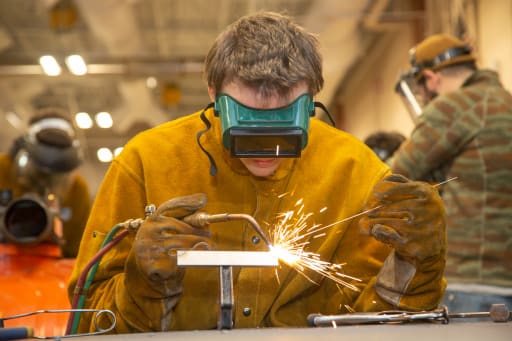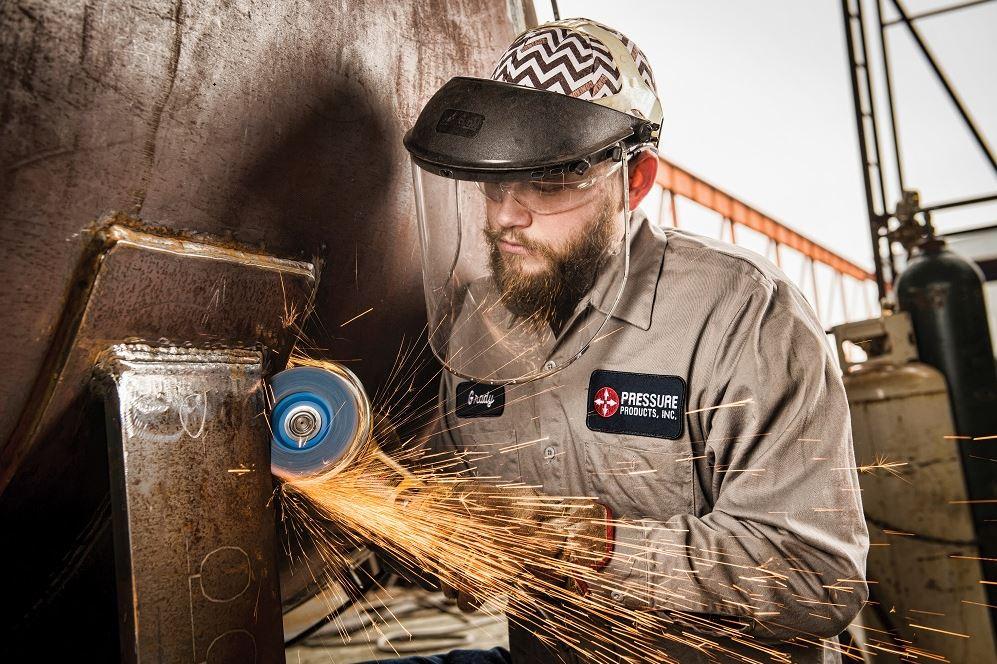Everything about Welding: Secret Insights Into Techniques and Finest Practices for Success
Welding includes a range of techniques, each matched for specific products and applications. Comprehending these approaches, such as GMAW, SMAW, and TIG, is vital for accomplishing excellent outcomes. The best tools and security techniques can not be ignored. As preparation and troubleshooting play essential functions in the welding procedure, understanding these components can greatly enhance the top quality of the end product. What are the key elements that ensure an effective weld?
Understanding Different Welding Techniques
Welding strategies include a variety of methods, each suited to details applications and materials. Among the most common methods are Gas Metal Arc Welding (GMAW), Secured Steel Arc Welding (SMAW), and Tungsten Inert Gas Welding (TIG) GMAW, additionally understood as MIG welding, is preferred for its rate and convenience, making it ideal for thin products. SMAW, or stick welding, is preferred for its simpleness and effectiveness in exterior settings, specifically with thicker steels. TIG welding uses accuracy and control, making it suitable for detailed job and non-ferrous metals (Montana Mobile Welding and Repair Belgrade). Each technique has its distinct advantages and factors to consider, permitting welders to choose the best method based on the job's demands, material type, and desired end results. Comprehending these techniques is vital for effective welding
Crucial Welding Devices and Devices
While different welding techniques require specific skills, the ideal equipment and devices are similarly important for attaining top quality outcomes. Necessary welding equipment includes welding machines, which vary relying on the strategy-- such as MIG, TIG, or stick welding. Safety gear, consisting of handwear covers, safety helmets, and aprons, assurances security and comfort throughout the procedure. On top of that, clamps and fixtures help protect products in position, ensuring accuracy in welds. Consumables like welding rods, cord, and shielding gas are likewise crucial elements that influence the quality of the weld. Additionally, devices such as cutters and grinders promote surface preparation and post-weld completing, adding to a specialist result. Investing in top notch tools inevitably enhances the effectiveness and efficiency of welding tasks.
Safety And Security Practices in Welding
Proper security methods are important in the welding industry to shield workers from potential threats. Welders must use ideal individual protective tools (PPE), including safety helmets with proper shading, gloves, and flame-resistant clothing. Sufficient air flow is vital to minimize direct exposure to harmful fumes and gases created throughout the welding process. In addition, workers ought to be learnt the appropriate handling of welding devices to avoid mishaps. Fire security procedures, such as keeping flammable materials far from the welding location and having fire extinguishers readily available, are required. Routine evaluations of tools and offices can aid recognize possible risks prior to they result in accidents. By sticking to these safety and security practices, welders can create a much safer working atmosphere and minimize dangers connected with their profession.
Preparing Products for Welding
Preparing materials for welding is an important step that considerably influences the quality and stability of the final product (Welding). Appropriate preparation involves cleansing the surfaces to eliminate impurities such as corrosion, dirt, and oil, which can endanger the weld. Techniques such as grinding, sanding, or using solvents are generally employed to attain a tidy surface. In addition, making sure that the products mesh comfortably is vital; gaps can cause weak welds. It's likewise crucial to think about the alignment and positioning of the parts, as this will certainly impact the simplicity of welding and the last outcome. Finally, choosing the ideal filler product and ensuring compatibility with the base steels is vital for attaining strong, durable welds
Tips for Achieving High-Quality Welds
Achieving top quality welds needs focus to detail and adherence to best techniques throughout the welding process. Proper joint prep work is important, guaranteeing surfaces are tidy and complimentary from impurities. Selecting the proper filler material and welding method based on the base steels is vital for ideal bonding. Keeping regular travel rate and angle while welding can protect against flaws and promote harmony. Furthermore, controlling warm input is important; too much warm can cause warping and deteriorated joints. If necessary, consistently evaluating the welds throughout the process permits for instant adjustments. Finally, employing ideal post-weld treatments, such as cleansing and anxiety alleviation, can enhance the durability and stability of the weld, inevitably making sure a successful result.
Repairing Common Welding Issues
Welding usually offers obstacles that can affect the high quality and stability of the end product. Typical concerns such as porosity, irregular weld grains, and getting too hot can occur, each requiring details repairing strategies. Understanding these issues is necessary for welders to enhance their skills and attain perfect results.
Porosity Troubles Described
Although porosity can commonly be overlooked, it remains a critical concern in welding that can compromise the honesty of a completed product. Porosity describes the existence of small gas pockets within the weld bead, which can lead and deteriorate the joint to premature failure. This problem more info commonly develops from impurities, dampness, or improper securing gas coverage during the welding procedure. To reduce porosity, welders must confirm that the base materials are dry and clean, make use of suitable securing gases, and keep constant welding criteria. Routinely checking the equipment and setting can also help recognize potential concerns before they manifest in the weld. Addressing porosity properly is necessary for accomplishing strong, sturdy welds that meet quality requirements.

Inconsistent Weld Beads
Irregular weld grains can greatly influence the top quality and stamina of a completed product. Numerous factors contribute to this issue, consisting of inappropriate travel speed, inaccurate amperage setups, and inconsistent electrode angles. When the welder moves also quickly, a bead might show up narrow and do not have penetration, while relocating as well gradually can create excessive accumulation. Additionally, using the wrong amperage can lead to either undercutting or excessive spatter, both of which concession weld honesty. The welder's method, such as inconsistent torch activity, can additionally lead to irregular bead look. To mitigate these issues, welders should focus on keeping consistent, regulated motions and making certain appropriate tools setups to accomplish uniformity in their welds. Uniformity is key to attaining dependable and strong welds.
Getting Too Hot and Warping Issues
Too much heat throughout the welding process can bring about significant overheating and warping issues, influencing the architectural stability of the work surface. These issues commonly manifest as distortion, which can compromise alignment and fit-up, making more assembly challenging. Elements adding to overheating consist of the selection of welding parameters, such as voltage and take a trip speed, in addition to the kind of material being welded. To minimize these concerns, welders should keep constant travel rate and proper warmth input while checking the work surface temperature level. Additionally, preheating or post-weld warm therapy can assist reduce anxieties triggered by fast air conditioning - Montana Mobile Welding and Repair Belgrade Fabrication. Normal examination and adherence to ideal methods are essential in avoiding overheating and ensuring the long life and integrity of welded frameworks
Frequently Asked Questions
What Are the Profession Opportunities in the Welding Sector?
The welding sector provides diverse career chances, including settings as welders, inspectors, educators, and engineers. Experts can operate in production, building and construction, aerospace, and vehicle fields, gaining from solid need and competitive salaries in numerous duties.
Exactly How Can I Boost My Welding Rate Without Sacrificing Quality?
To improve welding rate without sacrificing top quality, one must practice reliable strategies, keep devices, maximize settings, and boost hand-eye sychronisation. Regular training and seeking feedback can also greatly add to attaining much faster, high-quality welds.
What Qualifications Are Available for Welders?
Many certifications exist for welders, including those from the American Welding Society (AWS), the National Facility for Building And Construction Education And Learning and Research Study (NCCER), and various industry-specific companies. These credentials improve employability and show ability proficiency.
Exactly How Does Welding Influence the Features of Metals?
Welding affects the properties of steels by modifying their microstructure, which can result in modifications in ductility, solidity, and toughness. Warm input and air conditioning rates throughout the procedure significantly impact these material qualities.
Can I Bonded Dissimilar Metals Together?
